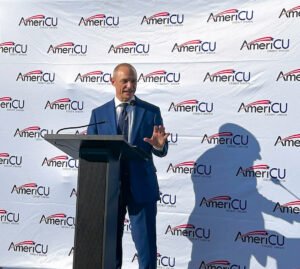How to plan for retirement without a company-matched 401(k)
By Deborah Jeanne Sergeant

Nearly all financial gurus encourage people to save for retirement by maximizing their 401(k) plans. However, for small business owners, sole proprietors, freelancers and gig workers, there’s no company-matched 401(k) plan.
But that doesn’t mean they cannot invest for retirement, according to three financial experts interviewed for this story.
Randy L. Zeigler, certified financial planner with Ameriprise Financial Services, LLC in Oswego, said the many different types of small business retirement plans suitable for sole owners and owners with employees include simplified employee pensions (SEP IRAs); savings incentive match plans (SIMPLE IRAs); solo 401(k) plans or 401(k) plans that include employees; defined benefit plans (either cash balance or more traditional monthly annuity pension style); and traditional IRA and Roth IRA plans. The IRA and Roth IRA “still work fine and allow for substantial contributions, typically $7,000 to $8,000 per year depending upon age and catch-up provisions, if the owner has no other retirement plan or when income falls within certain limits.”
The individual retirement account (IRA) offers tax advantages as an incentive for investing for retirement. The contributions are tax-deductible and the money grows tax-deferred until its withdrawal, which can be made without penalty starting at age 59.5.
“In 2025, the IRS’s annual contribution limit is $7,000 or there is a catch-up of $8,000 if you are age 50 or older,” said Franz Warren, regional director for J.P Morgan Wealth Management including New York and Connecticut. “There are different types of IRAs, and they come with their own tax implications. You may want to speak with a tax professional to determine which type makes sense for you.”
If you operate a small business with yourself as the employee, Warren said that a 401(k) may not be off the table. For those who are eligible, you can contribute both as an employer and an employee.
“The IRS’s 2025 contribution limit for a solo 401(k) is $70,000 for those under the age of 50,” Warren said. “If you’re 50 or older, you can make additional catch-up contributions. The amount varies depending on your age.”
It may seem like retirement savings is your focal point as working adult. However, Warren said it’s only a part of an overall financial plan that includes income, spending and goals like taking a trip or buying a dream home.
“For long-term goals, such as retirement for many, investing will likely be important to help you get there,” Warren said.
He recommended the free financial tool at www.chase.com/personal/investments/wealth-plan to help better understand all of these goals and how retirement is part of planning.
It may feel like retirement is too far away to worry about. However, “when it comes to planning and investing for retirement, the sooner the better. The amount of time that your money is invested and taking advantage of compounding is one of the most important factors in building your wealth.”
Mike Durand, director of institutional portfolio management at NBT Wealth Management, recommends SEP IRAs and SIMPLE IRAs for flexibility for business owners or the self-employed.
“A SEP IRA allows for higher employer contribution limits, up to 25% of income or $70,000 in 2025, while a SIMPLE IRA permits both employee contributions and employer matching,” Durand explained. “While there is no one perfect way to prepare for retirement, having a plan is essential. Consulting with a financial advisor and your tax adviser can help tailor a strategy to your specific needs and goals.”




